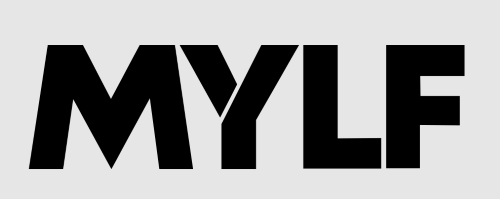Even though we all love a good deal, the concept of buying in bulk may not always equate to major savings. Many consumers have fallen prey to the myth of ‘bi’ discounts – believing that purchasing larger quantities will automatically result in lower prices per unit.
But is this really the case? Let’s break down the reality behind these so-called savings and see if they truly live up to their reputation.

Adult Time
 New releases every day
New releases every day 60,000+ episodes & 400+ channels
60,000+ episodes & 400+ channels Supports VR & interactive sex toys
Supports VR & interactive sex toys Watch on mobile, desktop or FireTV
Watch on mobile, desktop or FireTV
LetsDoeIt
 4K Exclusive Porn
4K Exclusive Porn 1000+ Scenes
1000+ Scenes Unlimited Steaming & Downloading
Unlimited Steaming & Downloading New Models You Wouldn't Have Seen
New Models You Wouldn't Have Seen Free Trial (Steaming Only)
Free Trial (Steaming Only)
Brazzers
 4K Exclusive Porn
4K Exclusive Porn 10000+ Scenes
10000+ Scenes Unlimited Steaming & Downloading
Unlimited Steaming & Downloading Over 2500 Pornstars
Over 2500 Pornstars Discounted Membership
Discounted Membership
Naughty America
 Unlimited downloading & streaming
Unlimited downloading & streaming Over 10,000+ porn scenes
Over 10,000+ porn scenes HD, 4K & VR porn content
HD, 4K & VR porn content Supports all devices including VR headsets
Supports all devices including VR headsets
Evil Angel
 Multiple weekly video updates
Multiple weekly video updates Over 18,000+ hardcore videos
Over 18,000+ hardcore videos Unlimited access to 80+ channels
Unlimited access to 80+ channels Award-winning series with top pornstars
Award-winning series with top pornstars
MamaCitaz
 4K Exclusive Latina Porn
4K Exclusive Latina Porn 800+ Scenes
800+ Scenes Unlimited Steaming & Downloading
Unlimited Steaming & Downloading Exclusive Latina Models
Exclusive Latina Models Free Trial For Two Days
Free Trial For Two DaysThe Reality Behind Savings
Saving money seems like a no-brainer. Who wouldn’t want to spend less and keep more in their wallet? However, as we delve deeper into the world of savings, we start to realize that it may not be as simple as it seems.
The Marketing Ploy
One key factor to consider is the role of marketing in promoting savings. Companies often use enticing buzzwords like sale or discount to lure customers into thinking they are getting a good deal. However, upon further examination, we can see that these sales may not actually offer significant savings at all.
Take for example a clothing store offering 50% off all items. Sounds like a great deal, right? But when you look at the original prices of those items, you may find that they were marked up significantly higher than their actual worth. So while it may seem like you’re getting half off, in reality, you’re just paying the regular price.
Another tactic commonly used by retailers is inflating prices before offering a discount. This gives consumers the illusion of saving money when in fact they are still paying more than they would have if the item was never on sale.
The Hidden Costs
Aside from misleading marketing tactics, there are other hidden costs associated with trying to save money. One example is the cost of time and effort. In order to take advantage of sales and discounts, one must dedicate time to searching for deals and strategies for maximizing savings. This may involve scouring through countless websites, sorting through piles of coupons, or even waiting in long lines at stores.
Another hidden cost is the temptation to overspend due to the allure of saving money. We’ve all been guilty of splurging on items we don’t necessarily need because they were on sale. While it may seem like a good deal at the time, these impulse purchases can add up and end up costing us more in the long run.
The Bi-Discount Myth
Now let’s delve into the controversial topic of bi discounts – those elusive offers that promise even bigger savings if you buy two or more items instead of just one.
Breaking Down the Numbers
At first glance, bi-discounts seem like a great opportunity to save money. After all, who wouldn’t want to get two products for the price of one? However, upon closer inspection, we see that this isn’t always the case.
Let’s say there is a promotion offering 20% off if you buy two bottles of shampoo instead of just one. Sounds like a steal, right? But when we do the math, we realize that buying two bottles at 20% off actually costs more than buying one bottle at full price.
This is because retailers use psychological pricing tactics to trick customers into thinking they are getting a good deal when in reality they are spending more money than necessary.
The Trap of Quantity Over Quality
The other issue with bi-discounts is that they often encourage consumers to buy more than they actually need. This not only leads to unnecessary spending but also contributes to overconsumption and waste.
By focusing solely on quantity rather than quality, we may end up purchasing products that are not the best fit for our needs. As Black Friday Porn Discounts are just around the corner, many adult websites are offering unbelievable deals and discounts for their premium memberships. This can result in having to repurchase items more frequently, ultimately costing us more money in the long run.
The Environmental Impact
Another aspect to consider is the environmental impact of bi-discounts. The production and transportation of goods contribute significantly to carbon emissions and plastic waste. By encouraging consumers to buy more through bi-discounts, companies are indirectly promoting unsustainable consumer behavior.
The Alternatives to Traditional Savings
So if traditional savings techniques like sales and discounts aren’t as effective as they seem, what alternatives do we have?
Investing in Quality Items
One option is to invest in quality items that will last longer and save you money in the long run. While it may require a larger upfront cost, it will likely be cheaper than constantly replacing cheaper, lower-quality items.
Budgeting and Smart Spending
Budgeting and smart spending can also help you save money without relying on sales and discounts. By setting financial goals and tracking your expenses, you can eliminate unnecessary purchases and prioritize saving for things that truly matter.
Community Sharing and Swapping
Another alternative is community sharing and swapping programs where individuals can exchange goods or services without monetary transactions. Not only does this promote sustainable consumption but it also fosters a sense of community.
The Bottom Line
While saving money seems like a simple concept, the reality behind it is much more complex. Marketing tactics often mislead us into thinking we are getting a good deal when in fact we may be overspending or sacrificing quality for quantity. Bi-discounts may seem enticing at first glance but upon closer examination, they are not always as beneficial as they appear.
As consumers, it’s important to look beyond the superficial offers of savings and critically evaluate the true costs and impacts. Once you have made the decision to explore incest porn sites, going listed here will lead you to a comprehensive list of discounted options. By investing in quality items, budgeting, and exploring alternative ways of consuming, we can break free from the myth of savings and make more informed decisions about our spending habits. In doing so, we not only save money but also contribute to a more sustainable and mindful society.
Why is There Not a Discount for Bisexual Individuals?
There should absolutely be a discount for bisexual individuals, as they face the same challenges and expenses as any other sexual orientation. It is unfair to expect them to pay full price while others receive discounts based on their identity. Every person deserves equal treatment and inclusion in various benefits, including discounts. Let’s work towards creating a more inclusive society that recognizes the needs of all individuals. Until now, I had never received such a sleazy executive critique for a film review.
What are the Reasons Behind the Lack of a Bi Discount?
The primary reason for the lack of a bi discount is that many businesses view the LGBTQ+ community as a smaller market with less spending power compared to the general population. This leads to companies not seeing the need for offering discounts specifically targeted towards bisexual individuals. There may be a lack of awareness or understanding about the unique challenges and discrimination faced by bisexual individuals, leading to a lack of initiatives for inclusivity and representation in marketing strategies.
Are There Any Plans to Introduce a Discount Specifically for Bisexual People in the Future?
At this time, there are no plans to introduce a discount specifically for bisexual individuals. This is because discounts are typically based on factors such as age, income level, or loyalty to a particular brand. However, businesses may offer discounts that are inclusive and welcoming to all members of the LGBTQ+ community. As society becomes more accepting of diverse sexual orientations, we hope to see more inclusive discounts in the future.



